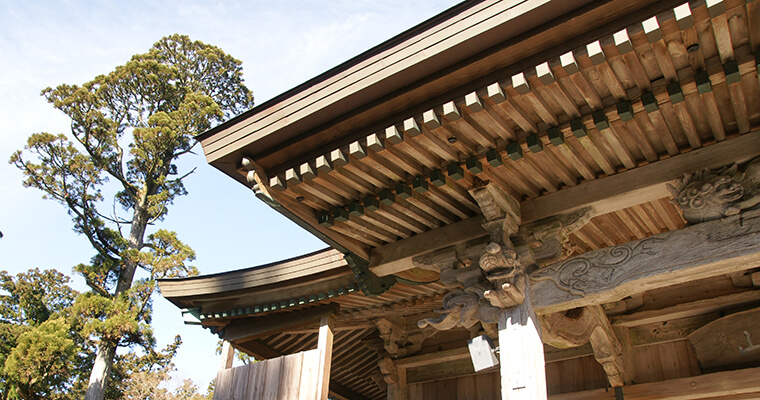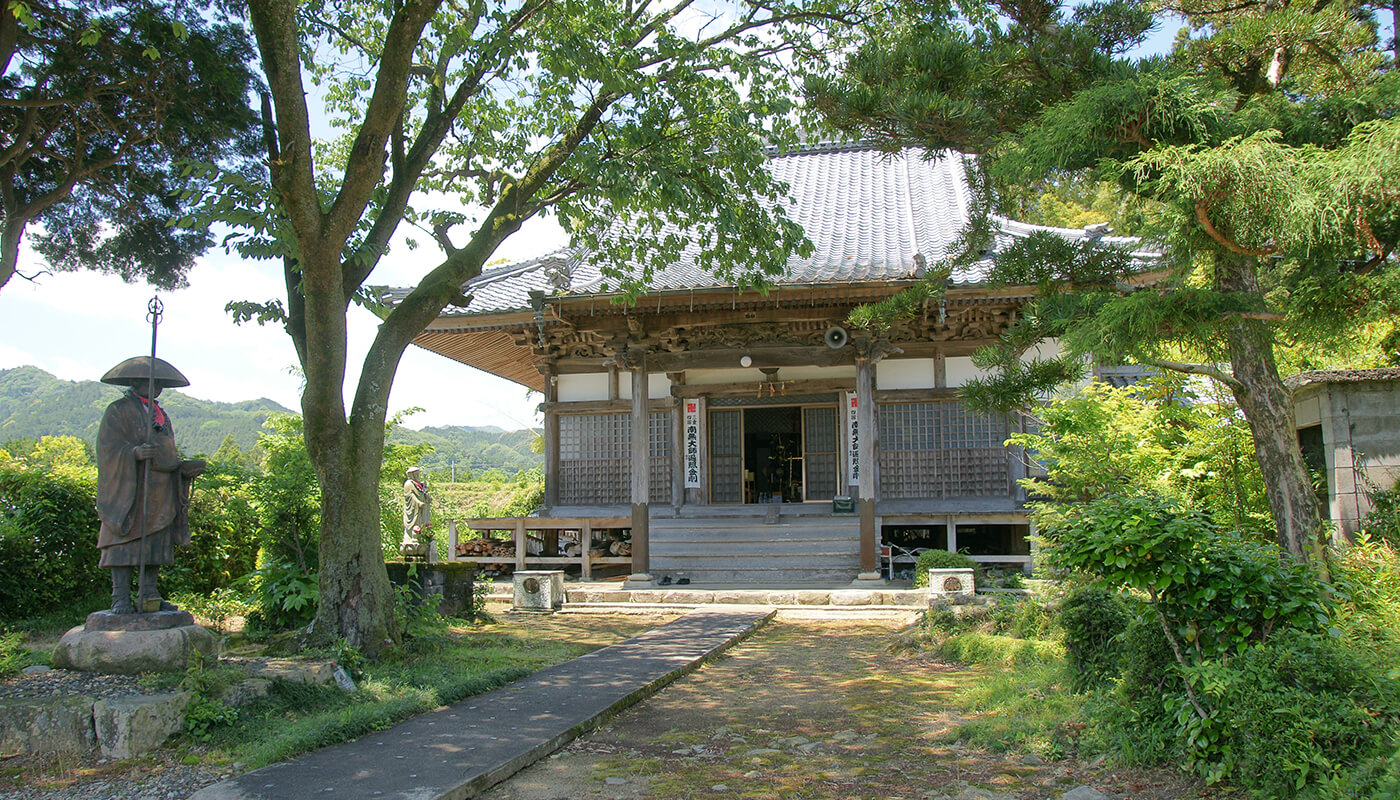Number 23Yatō-ji temple
History of the temple
The history of Yatō-ji temple started 1100 years ago. One night Emperor Daigo (885-930) had a vision in his dream, in which Goddess Kannon told him: I live at Mount Keisoku in Ise province and I pray for peace among people. Right now this land is in chaos, the fields are failing and people are deeply troubled. I would like to ask for your help in getting rid of these calamities. After saying this Goddess disappeared and the Emperor woke up. He found it really strange, so he called his messenger and sent him to Mount Keisoku right away. The messenger traveled all the way to the Ise province but lost his way just at the bottom of the mountain he was heading towards. Suddenly a rooster with three legs appeared, grabbed the messenger’s cuff in his beak and pulled leading him to the top of the mountain. When the messenger reached the top of the mountain he saw a clear stream gushing from the ground, which was surrounded by old cedars. He was overwhelmed with the mysterious profundity of the place. Suddenly an old monk appeared out of nowhere and said: Thank you for coming all the way to this Mount Keisoku. Let me show you the way. He took the messenger to the Hall, invited inside and opened the door of the altar where a 2.2m (7ft2.6in) high dazzlingly beautiful statue of Senju Kannon (Thousand-Armed Kannon) was worshiped. The old monk got his hands together as a sign of respect and said: This statue of Goddess Kannon was personally carved by Goddess Amaterasu. For many years two priests sent by her used to serve here but recently it became a job of two magpies. Goddess Kannon is a very merciful Bodhisattva that answers peoples’ prayers and comes to them in different forms. When finished the old monk suddenly disappeared. When the messenger came to his senses he understood that the old monk was actually one of the forms of the Goddess Kannon, so he kneeled and prayed wholeheartedly. He climbed down the mountain and headed back to the capital. The Emperor was surprised to learn that his divine dream was true. He called a famous monk Senchō and sent him to Ise to start a temple at Mount Keisoku. The Emperor gathered the best wood from all over Japan, sent it to Mount Keisoku and ordered the construction of the temple complex. Monk Senchō gladly obeyed the order, gathered the best carpenters and masons, took them to the site and started the works. The construction started in 907. On April 7th 910 the temple was completed and the ceremonial prayers were finished.
For the next 680 years Yatō-ji was a home to more than 100 monks. It was flourishing and every morning and evening the sound of sutra chanting could be heard all over the nearby mountains. Unfortunately in 1583 troops of Toyotomi Hideyoshi (regarded as the second “Great Unifier” of Japan) burned the temple during the assault on Kameyama Castle. The land which belonged to Yatō-ji was also confiscated.
Yatō-ji temple used to be a praying place for the Lords of Kameyama Castle. That is why in 1601 thanks to the donations from the Lord Seki Kazumasa (1564-1625), the temple’s 28th abbot Seiei was able to rebuild the Main Hall, abbot’s living quarters and the bell tower. Later the Lord of Tsu Castle Tōdō Takatsugu (1602-1676) also chose Yatō-ji to be his praying place and since then all the future Lords of that castle also protected and supported this temple.
The current Main Hall of the temple on the mountain was rebuilt in 1701 by Itakura Shigefuyu (1672-1709) – the Lord of Kameyama Castle. The temple at the bottom of the mountain was constructed in March of 1717, at the time of the 32nd abbot Gōei. The next Lord of Kameyama Castle – Itakura Shigeharu (1697-1724) donated Goma Hall (Goma/Homa fire ritual hall), monk’s quarters, the Main Gate and the main statue of Senju Kannon. Also he made this temple his praying place.
The miraculous power of Senju Kannon is well known and even now many worshipers still come to pray at Yatō-ji temple.
Seiyōzakki
Climbing through the fields to a temple on the top of the hill, a place where the rooster’s morning craw blends with the sound of the morning prayer.
Like the temple’s mountain name suggests, the rooster chants his morning craw every day since the day of the founding of the temple. This is truly a sign that Goddess Kannon’s vow of bringing a light in these dark times is still reliable and strong. The temple at the bottom of the mountain in Ikeyama village is so well built that a distinguished Buddhist monk started to live there.

Outline
-
Honorific name
Keisokuzan
-
Temple's name
Yatō-ji
-
Sect
Shingon
-
Religious service
Senju Kannon
(Thousand-Armed Kannon)

Details
-
Address
Mie Prefecture Kameyama Asakayama-cho 2033-1
-
Phone number
0595-85-0729
-
Stamp place
Temple's counter
-
Opening hours
8:00 - 17:00
-
Official website




